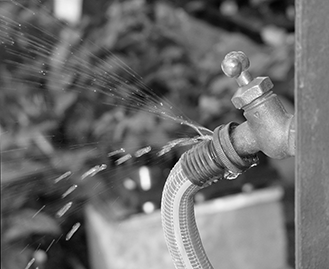What are the methods of Stormwater Installation?
Stormwater installation involves the setup of
drainage systems designed to manage excess rainwater, preventing flooding and
water damage in both residential and commercial areas. Professional plumbers
and contractors use various methods to ensure efficient stormwater management.
Here are some common methods of stormwater installation:
1.
Surface Drainage:
Surface drainage involves the installation of
channels, gutters, and grates to direct rainwater away from buildings and paved
surfaces. This method is commonly used in urban areas to prevent water pooling
and flooding on streets and sidewalks.
2.
French Drains:
French drains are trenches filled with gravel or
rock and a perforated pipe. They are designed to divert excess water away from
a specific area, such as a building's foundation. The perforated pipe allows
water to flow into the drain, preventing water accumulation and professionally
done by Emergency Plumbing Narre Warren
3.
Catch Basins:
Catch basins, also known as stormwater inlets,
are designed to capture rainwater and direct it into the drainage system. These
structures are commonly placed at low points on roads and parking lots to
collect runoff water.
4.
Retention and Detention Basins:
Retention and detention basins are designed to
hold and manage large volumes of stormwater temporarily. Retention basins hold
water for a longer period, gradually releasing it into the drainage system,
while detention basins release water more quickly to prevent flooding.
5. Dry
Wells:
A dry well is a pit filled with gravel or stone
that collects stormwater runoff and allows it to infiltrate the ground. This
method helps recharge groundwater and prevent surface flooding.
6.
Swales:
Swales are shallow, vegetated channels that
direct stormwater runoff while allowing it to infiltrate the ground. They are
often used in residential areas to manage rainwater naturally.
7.
Gravel Infiltration Trenches:
Similar to French drains, gravel infiltration
trenches are long trenches filled with gravel and a perforated pipe. They allow
stormwater to infiltrate the ground gradually, preventing runoff.
8.
Green Roofs:
Green roofs involve covering a building's roof
with vegetation to absorb rainwater and reduce runoff. This method not only
helps manage stormwater but also provides insulation and improves air quality.
9.
Permeable Pavements:
Permeable pavements, such as permeable concrete
or pavers, allow rainwater to pass through the surface and be absorbed by the
ground below. This reduces surface runoff and helps recharge groundwater.
10.
Erosion Control Measures:
Erosion control measures, such as retaining
walls and riprap, are used to stabilize slopes and prevent soil erosion caused
by heavy rain.
11. Bio
infiltration/Bio retention Systems:
These systems involve specially designed
landscaped areas that capture and treat stormwater runoff through vegetation
and soil filtration. They help remove pollutants from the water before it
enters the drainage system.
12.
Infiltration Basins:
Infiltrations basins are excavated areas filled
with stone or gravel that allow stormwater to infiltrate the ground gradually.
They are effective in managing large amounts of runoff.
Each method of Stormwater Installation Narre Warren has its
advantages and is selected based on the specific site conditions, local
regulations, and the goals of the stormwater management plan. Professional
plumbers of Local Plumber Narre Warren assess the site and design a system that
effectively manages stormwater while minimizing the risk of flooding and water
damage.



Comments
Post a Comment